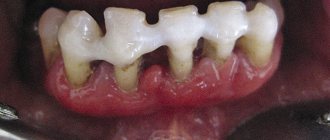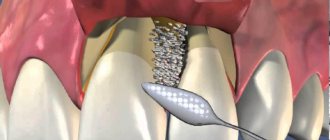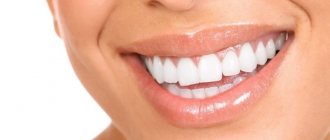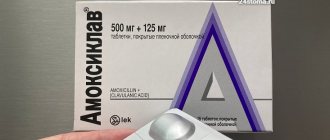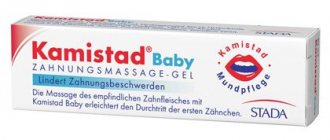HomePeriodontologyTreatment of periodontal disease with SIEMENS laser
The main reason patients visit a dental clinic is severe pain. Different diseases of the teeth and gums may have similar symptoms, and only a specialist can make an accurate diagnosis. The most common is periodontal disease. If treatment is not started in a timely manner, the development of the disease leads to inevitable tooth loss. Therefore, it is necessary to contact a dentist when the first symptoms of the disease occur.
Causes of periodontal disease development
The appearance of periodontal disease occurs for various reasons. As a result of examining more than 750 thousand patients, US scientists found that the disease primarily develops due to bacterial plaque on the teeth and a decrease in the body’s immune defense. It has been established that microorganisms that live in deposits and plaque on teeth are directly related to the development of the disease. It is the waste products of these microbes that have a negative effect on the gums and dental tissue, causing their destruction.
First, a person notices bleeding gums while brushing their teeth, which can also be accompanied by pain. Therefore, the process of oral and dental hygiene becomes more careful and of lower quality. As a result, plaque only increases, turning into tartar. At the same time, the environment for the development of microorganisms becomes especially beneficial.
During this time, inflammation and periodontal condition only worsens. Moreover, the negative process affects the activity of microvessels, which reduces nutrition, accelerating destruction. After this, the inflammatory phenomenon affects the bone tissue.
Another reason for the development of periodontal disease lies in the disruption of immune defense. The human body can be subject to disruptions due to stressful situations, trauma, and hormonal problems. As a result, immune cells perceive periodontal tissues as foreign and attack them. Such exposure causes aseptic inflammation of the gum tissue with subsequent death. Then the negative process moves to the bone tissue. The third stage of the disease is characterized by loosening and loss of teeth.
The following factors can aggravate the course of the disease: diabetes, smoking, gastrointestinal disorders, stress, hormonal imbalances, advanced caries, poor dentures and malocclusion.
A smile not only brightens the day
High-quality treatment of periodontal disease and other pathologies of the soft tissues of the oral cavity has one goal - to preserve the dentition intact. Not all people realize that the condition of their teeth is directly affected by the health of their gums. Proper oral care involves not only the regular use of brushes and toothpaste, but also the use of rinses that have a beneficial effect on the state of microflora. You can get rid of the need for treatment of periodontal disease if you do not neglect your gums and regularly carry out preventive examinations within the walls of the clinic. This is a question of the psychology of people who are either afraid or do not find time to care for their gums. But without this it is impossible to achieve serious life goals! The possibility of treating periodontal disease cannot be ignored: many oral ailments are invisible at first, and only a specialist can determine their presence, not only through a visual examination, but also based on the results of laboratory tests. Without healthy teeth, it is difficult to succeed in any field. Why exactly is effective prevention and treatment of periodontal disease necessary?
- To achieve professional heights. Without a beautiful smile, it is difficult to win the trust of potential business partners; it is difficult to count on the respect of the team at a prestigious job.
- To create a harmonious personal life. A snow-white smile is a powerful tool for attracting the attention of the opposite sex; without this, the dream of finding love and building a strong family will remain unfulfilled.
- To attract interest. Speakers, teachers, teachers, all people who speak publicly in one way or another and have a wide audience of listeners are required to look beautiful and aesthetically pleasing - this is the only way to maintain attention to their speech.
INTERESTING! Many public people: politicians, sports and show business stars pay great attention to the cleanliness of their teeth and the whiteness of their smile. Almost every popular personality has their own dentist. It is known, for example, that Maria Sharapova has as many as three personal doctors on her staff!
Periodontal disease - symptoms and signs
The first signs of the development of the disease include:
- Itching and discomfort in the gums;
- Bleeding while brushing teeth;
- Swelling and change in the shape of the gums;
- Unpleasant odor;
- Specific salty taste in the mouth.
If therapy is not started in a timely manner, purulent lesions will soon form in the gums. Pain increases, its color, shape and structure change.
In such cases, enlarged lymph nodes cannot be ruled out. And x-rays will show pathological changes in bone tissue with inflammatory foci and destruction of interdental septa.
How much does laser gum treatment cost?
The cost of laser treatment directly depends on the procedure, as well as on the level of the clinic and the qualifications of the doctor. Professional teeth cleaning with a laser in Moscow costs from 180 – 200 rubles per tooth. Treatment of gums using a diode laser (photodynamic laser therapy) will cost an average of 6,000 rubles per jaw. Laser curettage is an even more expensive procedure: you will have to pay a thousand or more rubles to treat one periodontal pocket. Surgical procedures using lasers also cannot be called cheap. For example, a patchwork operation on a small fragment of gum will cost 5,000 – 6,000 rubles. Despite the fact that the cost of laser treatment is high, the advantages of this technique make it increasingly in demand. Read about other gum treatment methods in the article.
Periodontal disease - how is it diagnosed?
Correct treatment of periodontal disease is possible only after a thorough diagnosis. However, one examination by a dentist will not be enough. You should undergo tests using modern equipment and drugs.
In the dental practice of the Bionic Dentis clinic, the German protocol is used to examine patients. This allows you to conduct a full examination and accurately make a diagnosis.
This examination includes:
- Inspection using an optical system that allows you to significantly enlarge the inspected surface and not miss even the slightest damage;
- Testing for hidden plaque on teeth. To do this, a special preparation is applied, which indicates the places where harmful microbes accumulate;
- Determination of inflammation using a marker drug that can indicate lesions;
- Bana testing, which helps identify microorganisms that cause the development of the disease. Thanks to this technique, a competent selection of antibacterial therapy occurs. Specialists from the Bionic Dentis clinic were among the first to conduct bana testing in Russia;
- An X-ray and orthopantomographic examination procedure that allows you to assess the condition of all dental tissues that are not visible during a simple examination. This helps prevent and prevent further development of inflammation.
After reviewing the results of a complete diagnosis of the patient, specialists at the Bionic Dentis clinic draw up a treatment plan. This approach allows us to completely cure 99% of patients suffering from periodontal disease who contact us.
Areas of application of dental laser
The laser beam produces the following beneficial effects:
- anti-inflammatory;
- sterilizing;
- biostimulating;
- anesthetic.
Once on the surface of the tissue, the beam instantly turns the liquid into vapor, which, like a microscopic explosion, deliberately breaks intermolecular bonds layer by layer. At the same time, all microorganisms in the affected area die. To ensure that healthy cells do not suffer, jet air and water cooling is used, which also serves to wash out (blow out) the removed fragments.
A special type of laser equipment is used to treat each type of disease. Examples:
- Erbium and diode units are used against caries and for treating hard tooth tissues.
- Gas semiconductor devices have proven themselves to be excellent in physiotherapeutic and reflexology procedures.
- Diode lasers are characterized by a good hemostatic effect and have found their use in surgery.
The purpose of each device is determined by the wavelength of the radiation and its intensity. For example, biostimulation requires the release of energy from 10 - 100 mW/cm?, and the anti-inflammatory effect will provide a power of 100 - 200 mW per square centimeter.
Different stages of periodontitis
Stages of a unique technique:
- 1. Begin therapy with ultrasonic cleansing of the entire tooth and its root. This removes plaque and stones. The use of ultrasound allows you to thoroughly clean even the most difficult to reach areas without pain or injury to the enamel. Specialists at the Bionic Dentis clinic perform this procedure using a special Sirosonic Sirona Siemens ultrasound device, manufactured in Germany. In this case, the level of processing is selected individually, which significantly increases work efficiency.
- 2. The second stage includes the removal of pigmented plaque and microscopic deposits located in hard-to-reach places. For this, the Air Flow technique is used. The method is implemented using a Prophyflex dental handpiece from the German company Kavo, from which mixed air and abrasive are released under high pressure. This mixture allows you to effectively eliminate the remains of infection and other contaminants. The peculiarity of the method is the use of calcium carbonate, which has a gentle effect on the gums and root system of the tooth. In combination of this drug with the Prophyflex device from Kavo, the procedure is performed with the utmost quality.
- 3. At the third stage, laser sterilization of the root pockets and gum edges is performed. Doctors at Bionic Dentis use the Sirolaser Sirona Siemens dental laser (Germany). The laser tip is inserted into the gum pockets, which leads to the complete destruction of pathogenic bacteria that cause the disease. The unique laser setting allows not to damage the gums, but to have a detrimental effect on microbes.
- 4. The fourth stage includes drug therapy using calcium copper hydroxide. The medicine is placed in the gum pockets, leaving it there for a long time. The drug relieves inflammation and sterilizes periodontal pockets in which the pathological process has begun. Our specialists use a patented original drug from the German company Humanchemie. This manufacturer is also the developer of this medicine.
- 5. At the fifth stage, the metabolism in the gingival tissues is corrected. For this purpose, the active tissue regeneration complex prf is used. The patient first donates blood from a vein, which is subjected to special treatment. This makes it possible to isolate specific prf proteins. It is these substances that can trigger tissue restoration and healing processes in the human body. Due to the fact that the proteins are obtained from the blood of a specific patient, there are no side effects or allergic manifestations. The process of obtaining active proteins for regeneration is an important and responsible procedure, which is performed under strictly sterile conditions. For this purpose, Bionic Dentis specialists use a method invented by scientists from the Munich and Charité clinics (Germany).
Advantages and disadvantages
- Laser treatment of gums allows you to quickly cope with pathogenic bacteria. When the laser comes into contact with the mucosal surface, a photocoagulation film is formed, which prevents infection and re-inflammation.
- The beam operates with high precision even on a minimal working area, which allows you to preserve the maximum volume of healthy tissue.
- No bleeding or serious damage during surgical procedures.
- The use of laser accelerates the process of tissue regeneration.
- Possibility of treating children and pregnant women.
- Quite a large number of restrictions.
- High cost of treatment.
What antibiotics are prescribed for the treatment of periodontal disease?
When contacting a specialist in a severe stage of periodontal disease, you cannot do without prescribing antibacterial therapy.
Antibiotics must be prescribed if:
- Pus was found in periodontal pockets;
- There are putrefactive-necrotic inflammations of the gingival tissue;
- The bone tissue is affected by purulent foci.
Antibacterial agents with a wide spectrum of action are used in dental practice. They show rapid activity in pathologies of any complexity, causing the death of harmful microorganisms.
The Bana test, which is used at the Bionic Dentis clinic in diagnosing periodontal disease, allows you to select effective drugs taking into account a specific clinical case.
Benefits of laser periodontitis treatment
No pain.
The bloodlessness of the operation, which was mentioned earlier, also implies absolute painlessness. The patient will not feel any discomfort or the need for anesthesia.
Save time.
Treatment of “pockets” with a laser will last no more than 1.5–2 hours. The problem can be solved in one visit to the dentist.
Fast rehabilitation.
Within a day, the patient will be able to resume their usual lifestyle, since after laser intervention there is no bleeding or food restrictions.
Aesthetic component.
An additional bonus of the procedure is polishing the roots of the teeth and whitening the crown part.
Efficiency guaranteed.
After laser treatment, sterility is maintained in the periodontal cavity, due to which periodontal destruction stops.
The process of treating periodontal disease at home includes:
- Mandatory brushing of teeth after each meal with Parodontax medicinal periodontal paste, widely used at any stage. The best tool for cleaning teeth is the Sensodyne medium toothbrush, which has medium hardness. You should also use a thin and flexible dental brush for the morning and evening procedures;
- Daily use in the evenings of an oral irrigator - a special device that cleanses the teeth and massages the gums using a stream of water and air. This improves blood flow in the vessels, has a positive effect on the condition of the periodontium, and reduces inflammation of the gingival tissue. The best irrigator is Braun Oral-B.
- Rinse your mouth thoroughly after eating using a special product;
- Lubricating the gums with Asepta gum balm, which eliminates pain and inflammation, exhibiting a disinfectant and healing effect.
- These products can be used as prescribed by a specialist, after the procedure for treating periodontal disease with ultrasound and active prf regeneration proteins has been carried out.
An integrated approach in the form of a clinical and home therapeutic course will ensure a positive result and maximum effect.
Contraindications to treatment
Like any technology, laser has contraindications that prevent its use in a number of cases, including:
- oncological diseases (especially malignant tumors in the oral cavity, head and neck area);
- tuberculosis;
- severe forms of diabetes mellitus;
- cardiovascular diseases;
- bleeding disorders, a number of autoimmune diseases.
If contraindications are suspected, the doctor may refer the patient to undergo additional diagnostic procedures.
Periodontal disease treatment cost
To determine the cost of the entire course, it is important to know what mandatory procedures it includes:
- Diagnosis of gum condition, selection of medications and products for home use;
- Deep laser cleaning of gums;
- Course therapy with laser and injections of active regeneration proteins prf.
If necessary, additional measures are prescribed:
- Splinting of mobile teeth using fiberglass;
- Making a relaxation mouthguard.
As a result, the average cost of mandatory procedures that are included in the course of treatment of periodontal disease with laser and prf is 140,000 rubles.
The price of splinting teeth on one jaw using fiberglass is 35,000 rubles.
Production of a relaxation mouth guard – 20,000 rubles.
Method of treatment
Laser treatment of gums takes place in several stages. The nuances depend on the specific procedure and the number of manipulations required. Before using the laser, the patient wears special safety glasses.
- Diagnostics. Identification of contraindications to the use of laser. A panoramic photograph of the jaw, a blood test, taking smears from the mucous membrane, microbiological studies and other diagnostic procedures related to the inflammatory process in periodontal tissues.
- Professional cleaning and sanitation of the oral cavity.
- Conducting anesthesia (if necessary).
- When using a laser therapeutically, in particular when cleaning periodontal pockets, a marking photosensitizer gel is first applied, which highlights areas of plaque and dental plaque accumulation. During surgical procedures, additional protection of surrounding tissues is required.
Why is periodontal disease treatment expensive?
Course treatment of periodontal disease is a high-tech process, which is performed by highly qualified specialists. In their work, doctors use expensive modern equipment and original medications produced in Germany.
The Bionic Dentis dental clinic has a full arsenal of high-tech equipment: a laser, a dental orthopantomograph, a blood processing system for isolating active prf regeneration proteins, the cost of which is several million rubles.
At the Bionic Dentis clinic, patients are guaranteed the authenticity of all equipment and medications. This is confirmed by certificates of conformity and registration certificates of Roszdravnadzor.
To provide affordable treatment to a wide range of patients, the Bionic Dentis clinic offers interest-free installments for a year.
The down payment is 30% of the total cost of treatment. The remaining amount is distributed evenly over 12 months.
Russian citizens aged 18-70 years can apply for an installment plan in just 15 minutes.
Indications and contraindications
The laser is indicated for use in the treatment of complex inflammatory processes, including periodontitis and others. The technique is effective and is used for endodontic intervention, for closing fissures, and for severe caries lesions.
Indications:
- gingivitis;
- periodontitis, periodontal disease of varying degrees;
- fibromas, hemangiomas;
- the need to clean and sterilize pockets;
- treatment of granulomas, gum fistulas;
- increased bleeding;
- any soft tissue diseases, especially at the initial stage.
The main symptoms for which laser treatment will be indicated by doctors at our clinic are:
- tissue sensitivity is increased, local or general bleeding is observed;
- the color of the marginal or general periodontal zone is changed;
- swelling, itching of tissues, appearance of gray or white plaque;
- purulent formations, the gingival margin peels off from the crown of the tooth;
- Pathological diastemas and trema are formed, and the root part is exposed.
But the use of the technique is not possible in all cases; there are a number of contraindications for which laser is not prescribed:
- tuberculosis;
- diabetes at any stage;
- stroke, heart attack, rehabilitation period after illness;
- neoplasms, radiation therapy.
How to find a specialist to treat periodontal disease?
Carrying out full treatment of periodontal disease requires modern equipment and imported drugs. But the main thing is a specialist with the necessary knowledge and experience. Therefore, when choosing a periodontist, it is important that he has a certificate confirming the specialist’s qualifications. Also, the doctor must be trained in the treatment of periodontal disease using a laser and active prf regeneration proteins.
The specialists of the Bionic Dentis clinic are highly qualified and have specialized medical education. They have certificates confirming that they have completed training with German specialists.
The average experience of our periodontists is 10 years. They regularly participate in international conferences on clinical periodontology.
When choosing a periodontist, an important point is confidential communication with the patient. If a specialist explains the main features of the procedures, talks about the effects of the drugs used, possible side effects, contraindications and other aspects, then you have found your doctor!
Werner Elena Vladimirovna
Dentist periodontist
More details
Features of laser periodontitis treatment
Moderate and severe severity of periodontitis (inflammation of the periodontal tissue) is characterized by the formation of gum “pockets” with purulent contents. They represent a source of constant infection in the body, which must be sanitized as quickly as possible. If previously success could only be achieved through surgery, today dentists are increasingly resorting to bloodless laser treatment. What is it? First, the doctor will conduct a full examination to exclude the patient from having absolute contraindications for laser treatment (chronic endocrine diseases, a history of heart attack, oral oncology). Then, depending on the clinical picture and technical equipment of the dental clinic, the type of laser for the procedure will be selected: diode, neodymium, holmium or erbium. After this, in compliance with all conditions of dental sterility, a laser light guide is inserted into the periodontal cavity. Under the influence of the energy of the laser beam, tissues affected by bacteria “evaporate”, while neighboring healthy ones remain uninjured.
Examples of work “Before” and “After”
Gap between the front teeth - diastema
Case: Gap between the teeth and complaints about the aesthetics of the smile Work: 6 Empress Esthetic veneers on the front teeth and a metal-ceramic bridge on the lateral chewing teeth on the left Time: 6 days Number of visits: 3 Cost: 135,000 rub.
Restoration of anterior teeth with Empress veneers
Case: the patient complained of unsatisfactory aesthetics of the front teeth and a gap between the teeth.
Restoration of front teeth with ceramic veneers (May 2012)
Case: I went to the clinic with a complaint about the unsightly shape and position of the central incisors on the upper jaw.
Aesthetic restoration - lumineers (July 2013)
Case: the patient complained of unsatisfactory aesthetics of the anterior teeth (enamel color, crooked incisors).
Dental implantation
- — cutting the gums to install implants,
- — opening of implants after their engraftment,
- — antiseptic treatment of the implant bed,
- – treatment of peri-implantitis – inflammation around installed artificial roots
Dental restoration through implantation is one of the main indications for the use of a laser device. “Laser scalpel” allows you to create not only aesthetics of the gums, but also significantly reduce the rehabilitation period due to less tissue trauma: swelling and pain are reduced, bleeding from the wound stops, tissues heal 2 times faster.
